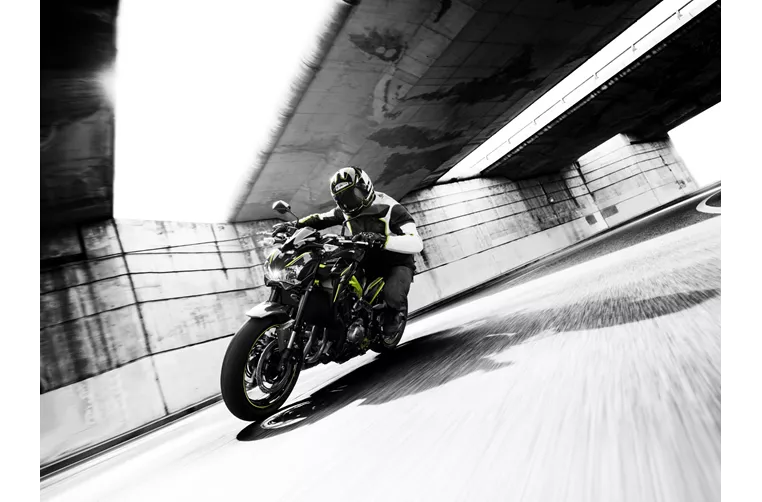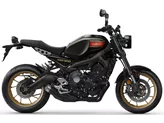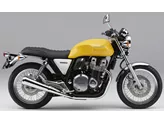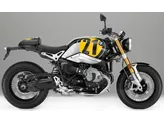Kawasaki Z900 2018 vs. Kawasaki Z900 RS 2018

Kawasaki Z900 2018

Kawasaki Z900 RS 2018
Genel bakış - Kawasaki Z900 2018 vs Kawasaki Z900 RS 2018
The Kawasaki Z900 2018 is a naked bike that boasts a powerful and silky engine with an engine power of 125.4 HP and a torque of 98.6 Nm. It is equipped with a fuel injection system and features a liquid cooling system. The bike has a displacement of 948 ccm and is powered by a 4-cylinder engine.
In terms of suspension, the Z900 2018 is equipped with an Upside-Down telescopic fork in the front, which can be adjusted for preload and rebound. The rear suspension consists of a swing arm with a monoshock, also adjustable for preload and rebound. The rear suspension is made of aluminum. The frame of the bike is made of steel and has a double cradle design.
The braking system of the Z900 2018 includes double disk brakes in the front with a diameter of 300 mm and four pistons. The bike is also equipped with ABS for advanced rider assistance.
In terms of dimensions and weights, the front tire has a width of 120 mm and a diameter of 17 inches, while the rear tire has a width of 180 mm and a diameter of 17 inches. The wheelbase of the bike is 1450 mm and the seat height is 795 mm. The kerb weight of the Z900 2018 with ABS is 210 kg.
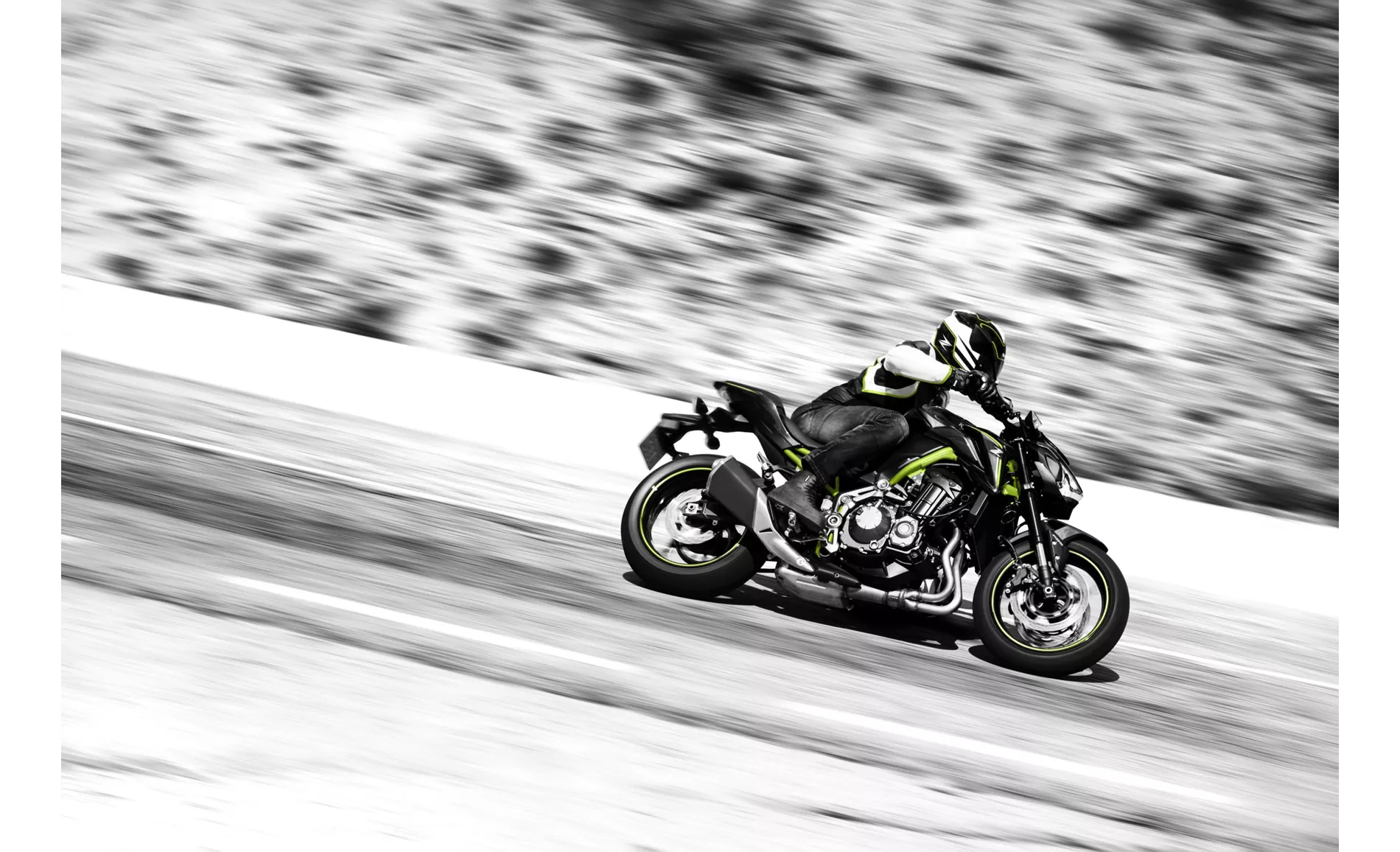
Kawasaki Z900 2018
The Kawasaki Z900 RS 2018, on the other hand, also features an in-line engine with a displacement of 948 ccm. It has an engine power of 111 HP and a torque of 98.6 Nm, similar to the Z900 2018. The fuel system is also injection-based and the cooling system is liquid.
In terms of suspension, the Z900 RS 2018 is equipped with an Upside-Down telescopic fork in the front, which can be adjusted for compression, preload, and rebound. The rear suspension consists of a swing arm with a monoshock, also adjustable for preload and rebound. The rear suspension is made of aluminum. The frame of the bike is made of steel and has a tubular design.
The braking system of the Z900 RS 2018 includes double disk brakes in the front with a diameter of 300 mm and four pistons. Similar to the Z900 2018, it is equipped with ABS for advanced rider assistance. However, the Z900 RS 2018 also features additional rider assistance systems such as ride by wire and traction control.

Kawasaki Z900 RS 2018
In terms of dimensions and weights, the Z900 RS 2018 has the same tire specifications as the Z900 2018, with a front tire width of 120 mm and a diameter of 17 inches, and a rear tire width of 180 mm and a diameter of 17 inches. The wheelbase of the bike is slightly longer at 1470 mm, and the seat height is higher at 835 mm. The kerb weight of the Z900 RS 2018 with ABS is 215 kg.
In terms of strengths, both bikes have powerful and smooth engines. They also have great looks, with the Z900 2018 having a sharp and sporty look, while the Z900 RS 2018 has a retro design. The Z900 2018 has a low seating position, making it easy to handle and maneuver, while the Z900 RS 2018 offers a comfortable seating position and balanced handling.
However, the Z900 2018 has some weaknesses, such as the lack of traction control and a knee angle that can be strenuous for tall riders on long rides. On the other hand, the Z900 RS 2018 lacks a shift assistant and is heavier compared to other retro bikes in its class. The seat of the Z900 RS 2018 is also criticized for being a little too soft on long tours, and it lacks wind protection.
Overall, both the Kawasaki Z900 2018 and the Kawasaki Z900 RS 2018 are powerful and stylish bikes with their own strengths and weaknesses. The Z900 2018 is more focused on sporty performance, while the Z900 RS 2018 offers a more comfortable and retro riding experience.
Teknik Özellikler Kawasaki Z900 2018 ile karşılaştırıldığında Kawasaki Z900 RS 2018
Karşılaştırıldığında Artıları ve eksileri
Karşılaştırıldığında Artıları ve eksileri
Kawasaki Z900 2018
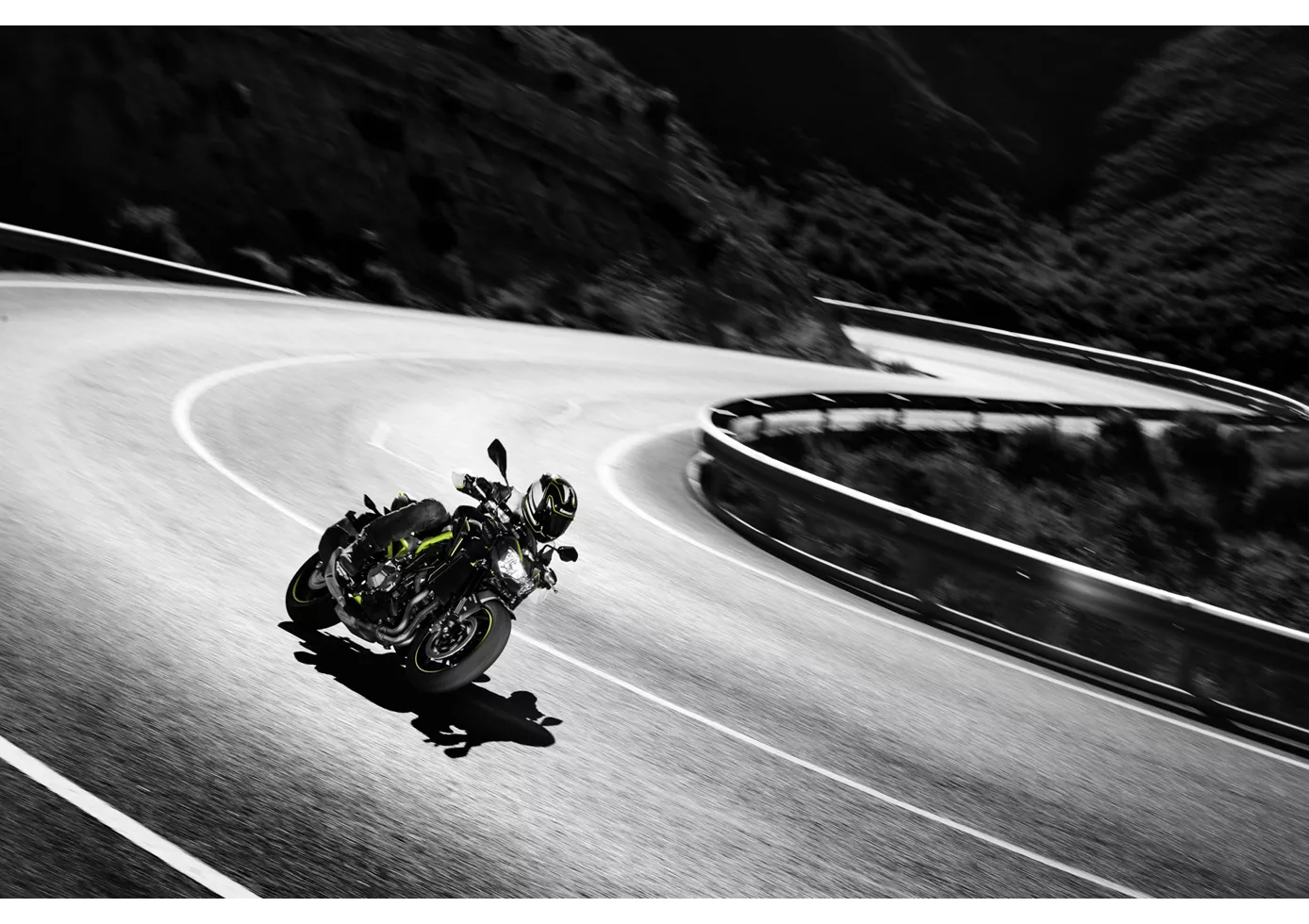
Z900, çekismeli naked motosiklet segmentinde ön siralarda yer aliyor. Her seyden önce, motoru kesinlikle mükemmeldir, inanilmaz derecede sorunsuz çalisir ve tüm devir araliklarinda bol miktarda güç sunar - bir Japon dört silindirli motora yakisir sekilde. Sportif, agresif görünümü de buna uyuyor. Elektronik zil ve isliklardan vazgeçiyor, ancak yine de viraj alirken, fren yaparken ve virajlardan hizlanirken büyük ölçüde güvenlik sagliyor. Alçak koltuk özellikle küçük sürücüler için faydalidir, ancak daha uzun boylu sürücüler uzun yolculuklarda daha düz bir diz açisini özleyebilirler. Düsük agirlik ve kompaktlik Z900'ü özellikle manevra kabiliyeti yüksek ve kullanimi kolay hale getirir. Fiyat açisindan da son derece cazip bir spor topu
Kawasaki Z900 RS 2018

Dört silindirli motoru ipeksi bir sekilde pürüzsüzdür ve ayni zamanda kaskinizin altinda siritmaniza neden olacak kadar güç saglar. Ayrica manevra yapmasi çok kolaydir, bu da onu mükemmel bir günlük banliyö ve hafta sonu ikonik bir eglence motosikleti yapar. Görünüm, klasik tasarim ve modern detaylar arasinda mükemmel bir denge kurarak uyumlu bir retro paket olusturur ve ayni zamanda Kawasaki tarihine layik bir övgüdür. Sik bir görünüme sahip harika bir çiplak motosiklettir.
Fiyat Karşılaştırması Ortalama Piyasa Fiyatı Kawasaki Z900 vs Kawasaki Z900 RS
There are a few key differences between a Kawasaki Z900 2018 and a Kawasaki Z900 RS 2018. In terms of price, the actual average price of a Kawasaki Z900 RS 2018 is about 37% higher. A Kawasaki Z900 2018 experiences a loss of 640 USD in one year and 520 USD in two years of ownership. This is offset by a loss of 900 USD and 1,070 USD for a Kawasaki Z900 RS 2018. Compared to Kawasaki Z900 RS 2018 there are more Kawasaki Z900 2018 bikes available on the 1000PS.de Marketplace, specifically 55 compared to 28. It takes less time to sell a Kawasaki Z900 with 112 days compared to 154 days for a Kawasaki Z900 RS. Since model year 2017 1000PS.de editors have written 46 reviews for the Kawasaki Z900 and 26 reviews for the Kawasaki Z900 RS since model year 2018. The first review for the Kawasaki Z900 was published on 11/11/2016 and now has more than 93,200 views. This compares to more than 63,700 views for the first review on Kawasaki Z900 RS published on 9/6/2017.
